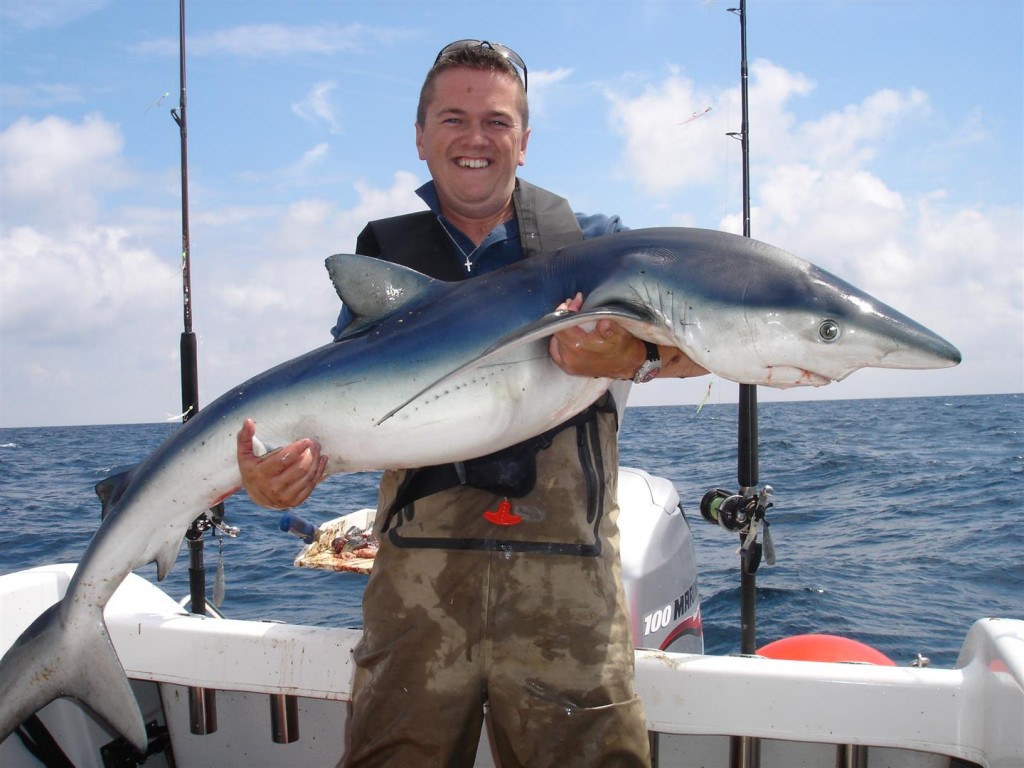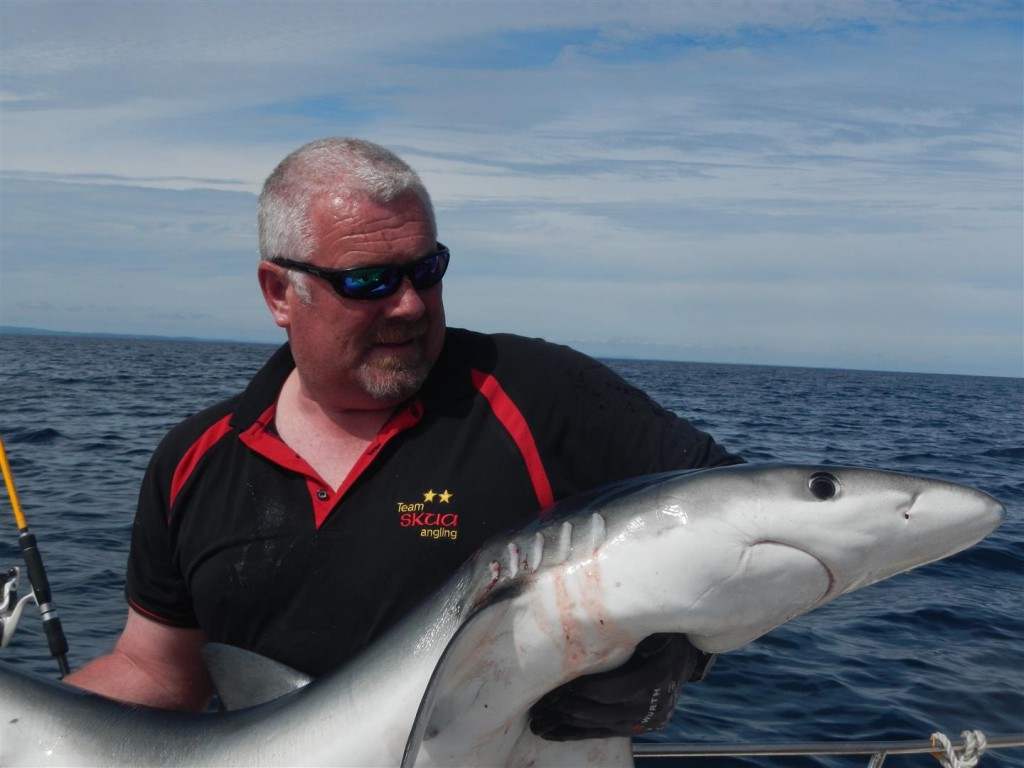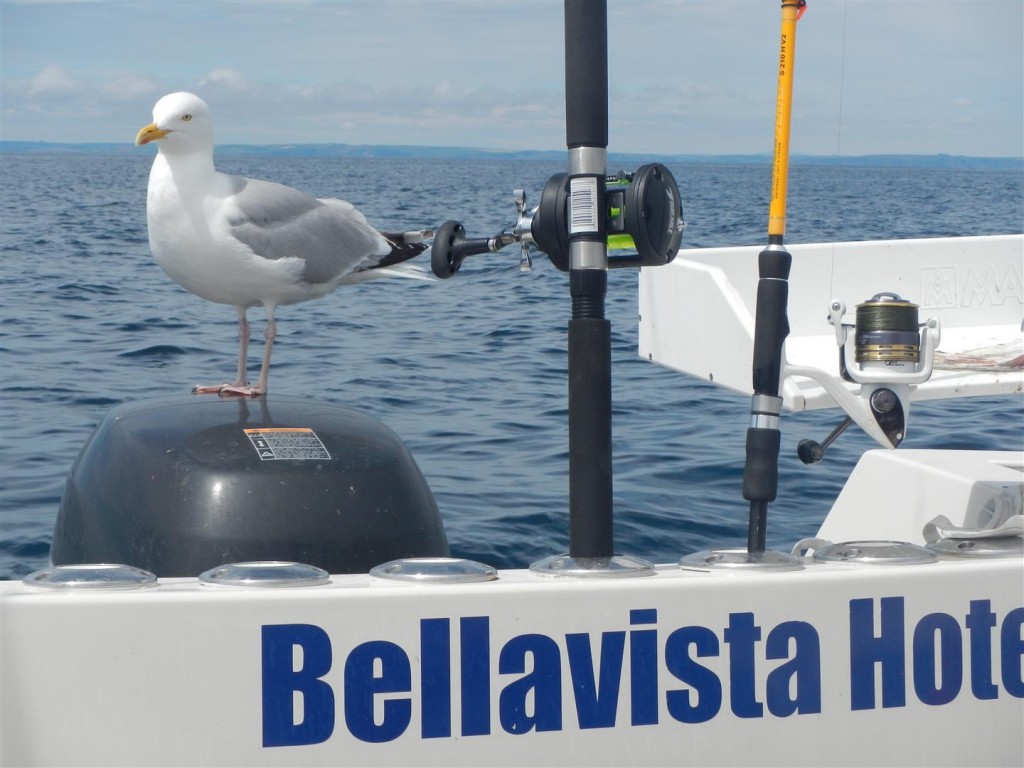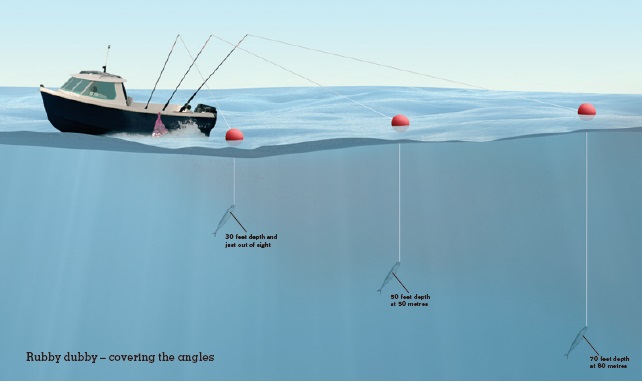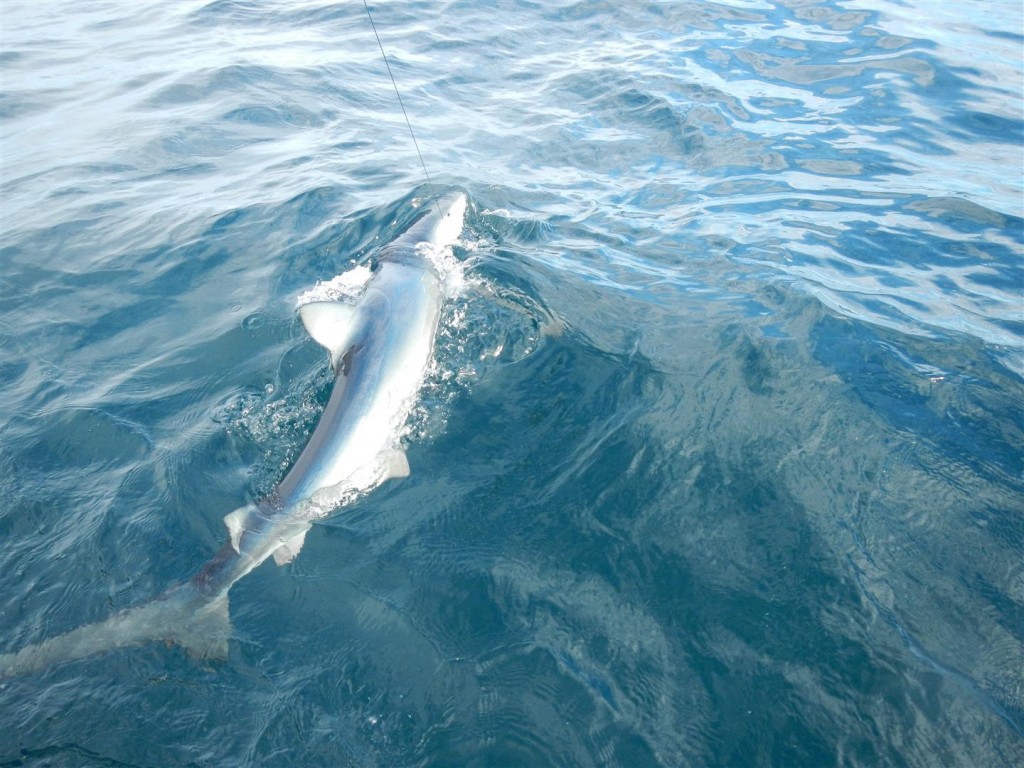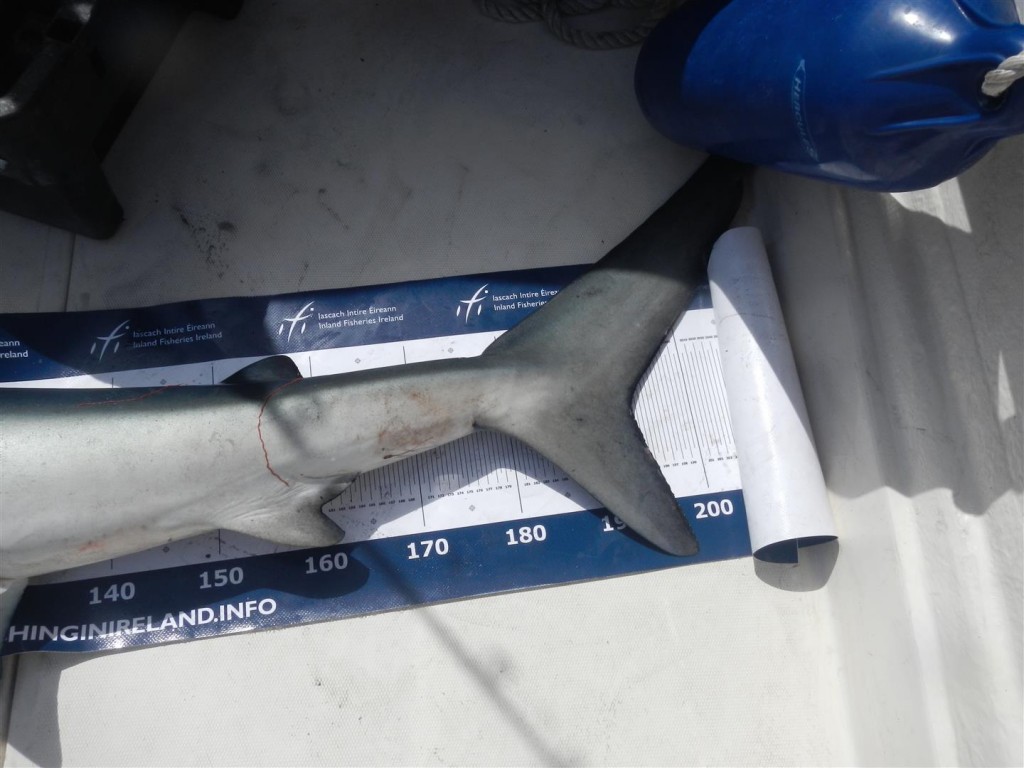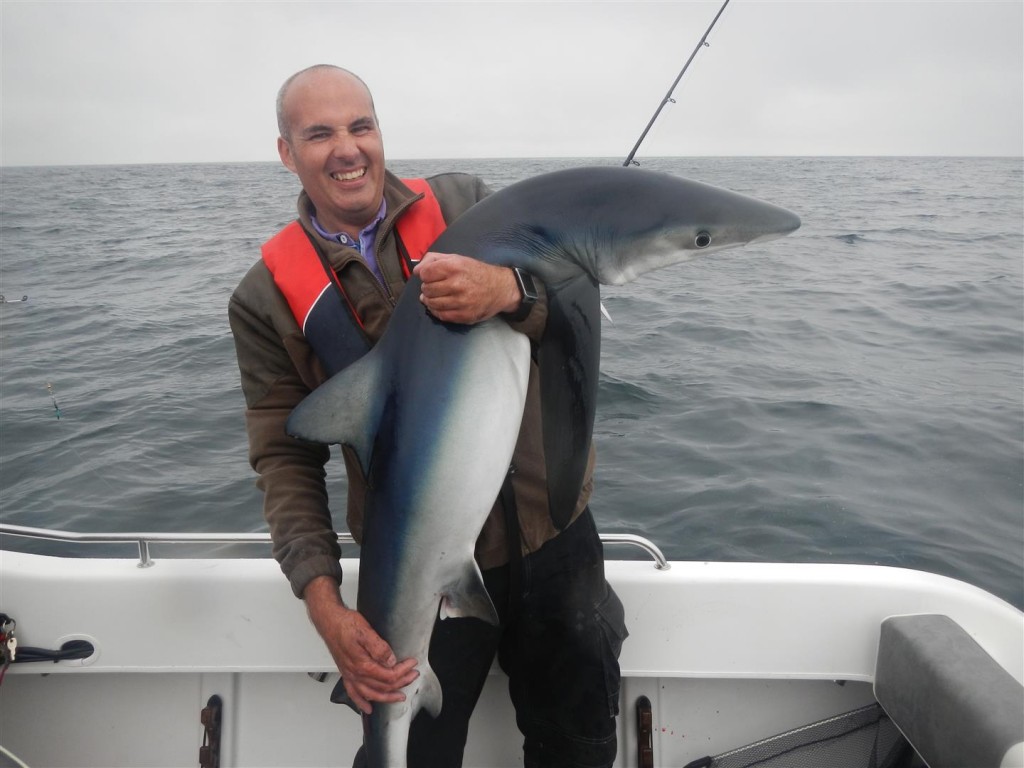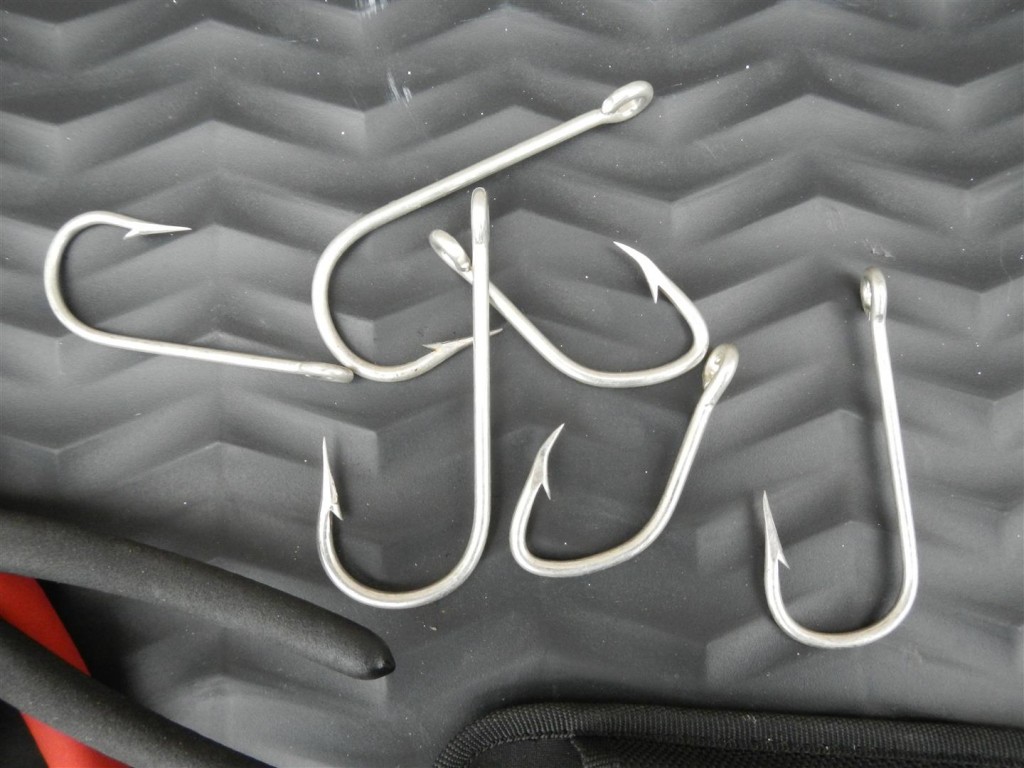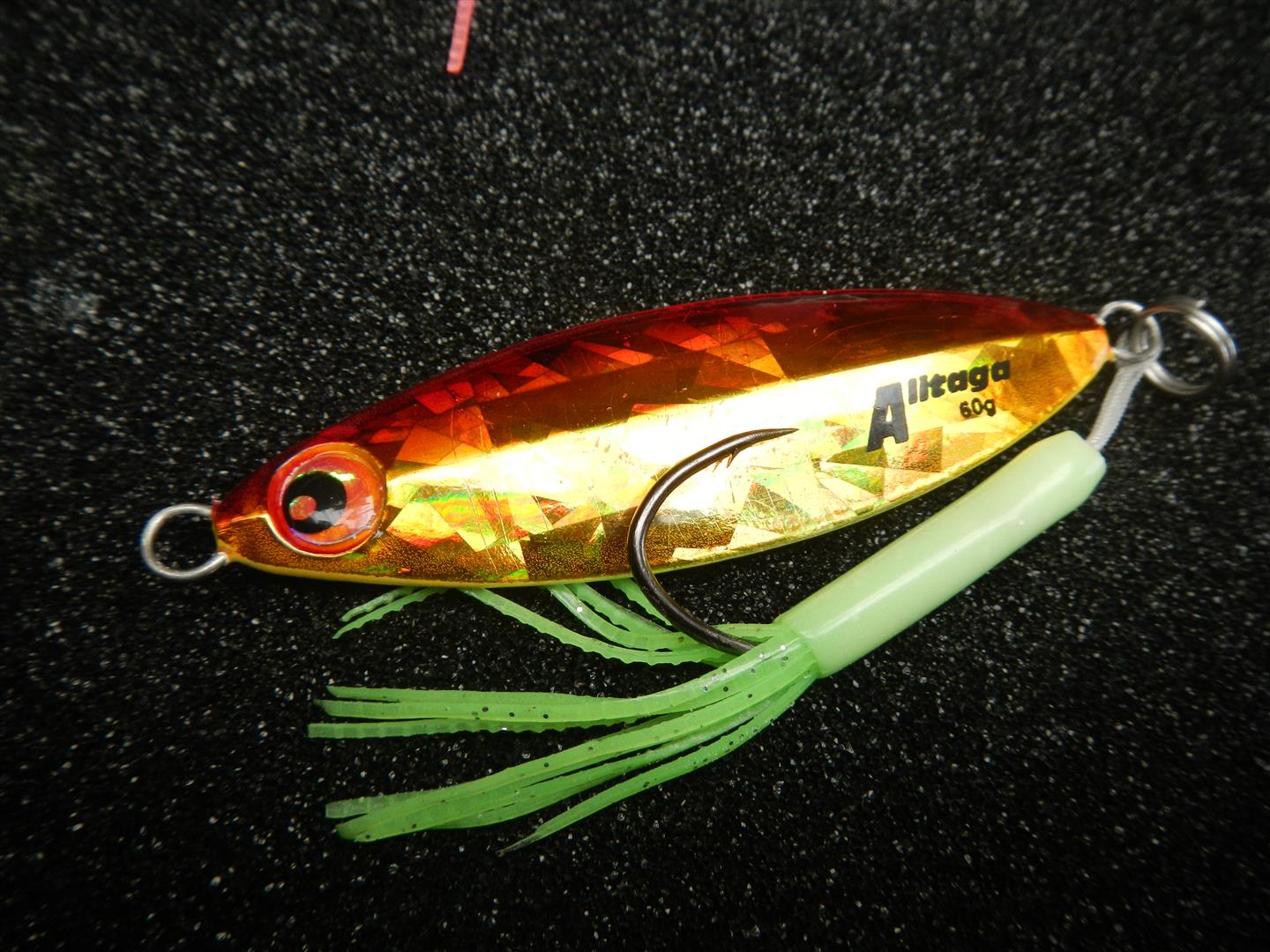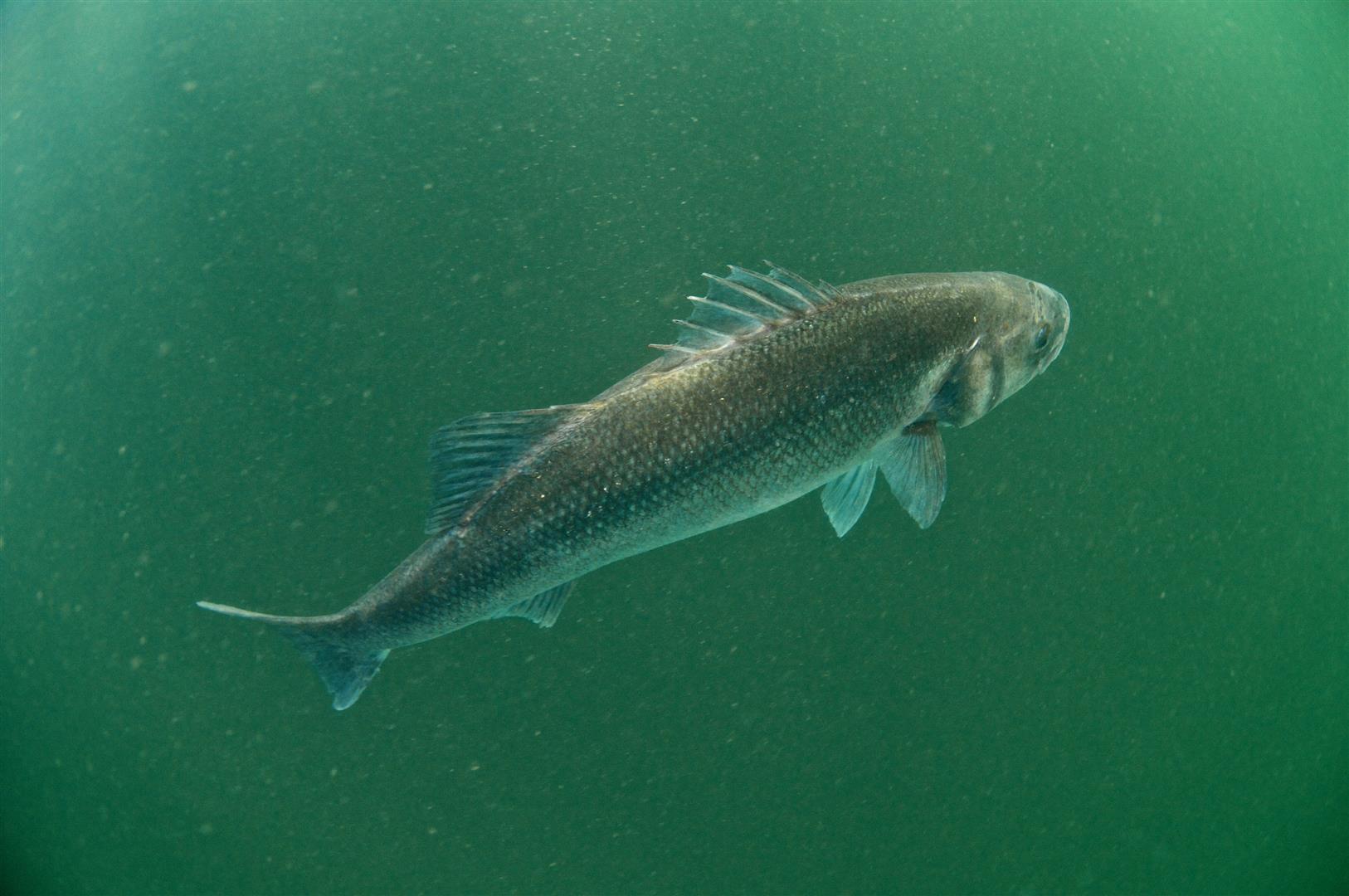* The Blue Bible #2
The Fishing!
Before you ever set sail for a shark trip it is important that you have all the ingredients for a great day. I don’t mean the weather! There are plenty of things to be sorted and packed before you head offshore. Make sure you are well kitted out.
You need to take shark fishing from a small boat seriously. Shark fishing brings an amount of dangers that cannot be underestimated. Take an example: There was a chap I have met a few times over the years. He wrote boat fishing articles for Sea Angler magazine. I am not going to name in order to save his blushes! He had caught more sharks than most have had hot dinners – He ended up getting twenty six stitches from an accident with a shark. He said that he just got too blasé.
So before you get a bait in the water make sure that you have planned what to do when a shark hits. Are you going to release a fish at the side of the boat? Are you going to bring the shark on board? You need to make sure that the deck of the boat is clear and that everybody knows what their job is when the shark is aboard. Screaming like a girl and jumping up onto the seat is not an option!
Getting a shark from the water to the deck is a difficult task. You need to be aggressive in your approach to lifting. A tailer might help. The more guys that can get a hand to the fish the better but again: the safety element of the procedure is most important.
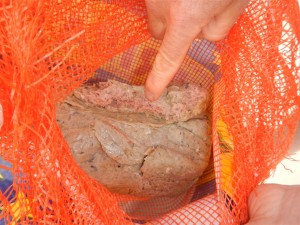
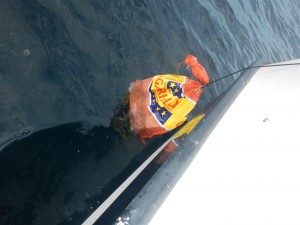
But before that we need to catch. Firstly you need to set the ruby dubby bag. People will have their own recipes for the perfect dubby. I like plenty of mackerel mushed down to a gloopy consistency. To this mixture I will add bran and finally a good dollop of oil. People often ask how many mackerel will you need? I tend to look at it this way – you would want at least ten mackerel for a bag of dubby. You will change the bag every 20mins/30mins if you plan to give it at least three hours of fishing that will be 40-60 mackerel for dubby and probably 10 for bait. So 50 mackerel can be considered a minimum. usually that amount of mackerel is not a problem to catch but in early or late season it can prove the difference between having a good easy day or a frustrating one. Many skippers will have dubby already made. This is worth paying an premium for this service. I like to use a block of dubby. These can be sourced from fish factories. The usual block I use will take somewhere like 3 hours to melt maybe even 4 hours. A 4 hour hour session catching blues is enough for all but the most fanatical shark angler. If the fish are around in numbers it will be a hectic day. If the fish are scarce it will be a tough boring day interspersed with some hectic periods.
So what about location?
Off Cork Harbour the sharks will be around quite close in, especially during July and September. When I go shark fishing I prefer to get myself well offshore. There are no guarantees in shark fishing but I like to think I am stacking things in my favour by heading a decent distance to catch fish. As a rule of thumb I like to have 250 feet under the keel. This sort of depth will put you somewhere like twelve miles or more offshore. I will usually allow the wind to prompt my direction of travel. I will head in a direction that at least I will be drifting in the direction of home.
Once in the area it is simply a matter of rigging the rods and setting out the baits. I will usually have three baits in the water. Firstly I will set out two baits out into the trail. These baits will be suspended under a balloon. I will use a ballo0n clip to hold the balloon in position. I usually set my baits at least until they are out of sight. This prevents any marauding gannets from stealing the bait and heaping a whole pile of trouble on us!
The final rod I will just drop over the side without any balloon.
It is important to keep a close eye on the rubby dubby bag or container. you need to be monitoring the ooze that is coming from the bag. Too little and the trail will not be as effective, too much and the bag will be washed out too soon. If you are using you own dubby you will need to change the bag as soon as it stops issuing a decent stream of particles into the trail. It is best to have another bag prepared and standing by to keep the trail consistent. u should do your best to avoid any spillages of rubby dubby into the boat as the deck will soon become like an ice rink.
It is really just a waiting game after that. I will usually give the fishing 90minutes. If you have not had a fish in 90mins it is just about time to admit defeat and head off. By the time 2 hours rolls by you should definitely consider chasing elsewhere or think about going for a different species! I have seen guys tough it out until the last of their dubby and maybe get a straggler close to the end. unless you are enjoying some fishing while the shark baits are out I think frustration and boredom will surely take hold.
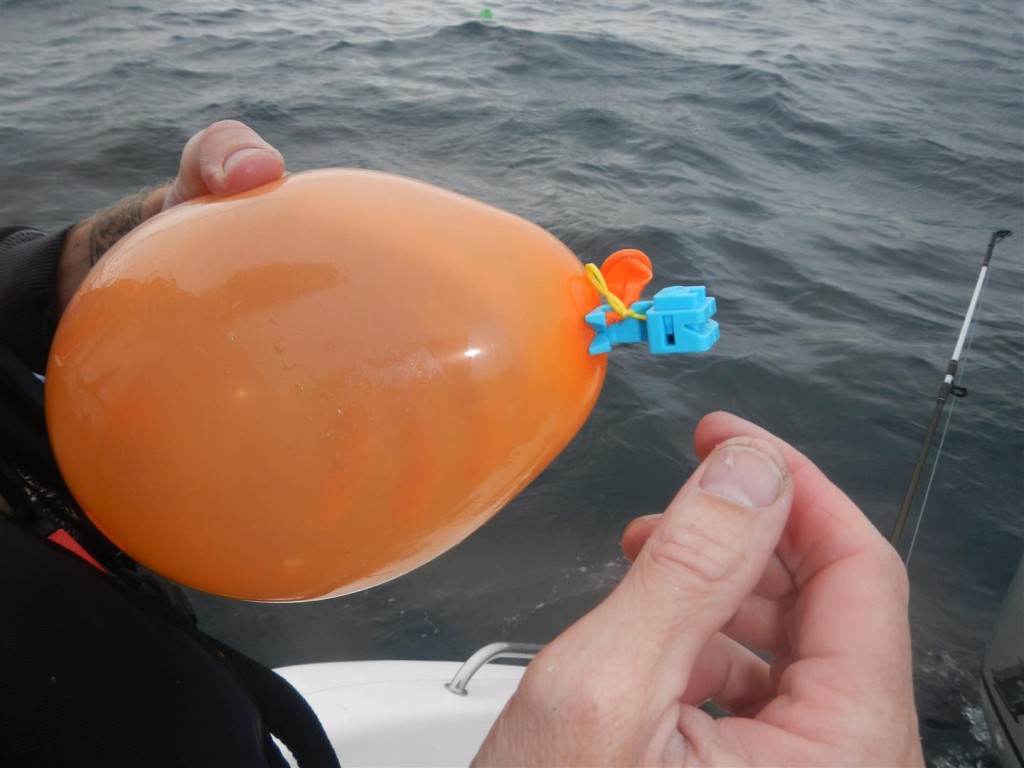
Off Cork Harbour the areas you are shark fishing tend to be flat muddy bottoms that hold little other than pockets of whiting and maybe some haddock. If you are lucky enough to stumble across some rock then you stand a chance at catching some ling, pollack or cod. There is also the possibility of a hake. More often than not the best sport is to be got by catching garfish that will be attracted into the trail. It is a good thing to have suitable gear for fishing for garfish on board. you light lure rod will do nicely and will allow the gars to express themselves. Much of the rime you will not have the chance to fish for garfish because the sharks can start to come thick and fast.
You baits will sit in the trail as you drift along. Sharks can detect blood in the water at minute quantities (1 part blood in a million parts water so they say). Sharks will pick up the trail and if they are hungry they will follow the trail to its source. A shark is just as likely to come in from the side as to follow the trail in from distance. I have see anglers nearly fighting to get their bait the furthest away from the boat only to have the close in rod, under the boat, to catch the first shark. whichever shark bait gets taken the results can be very different. Much of the time you will not hear the rod scream as the shark runs, no you will more than likely see your balloon start to head towards the boat. You might be lucky and the shark may immediately start to run but more than likely the shark will continue its cruise. it is important to take the second rod, and all other rods, in at this time. Leaving baits in the water will often result in the hooked shark taking another bait as it cruises toward the boat.
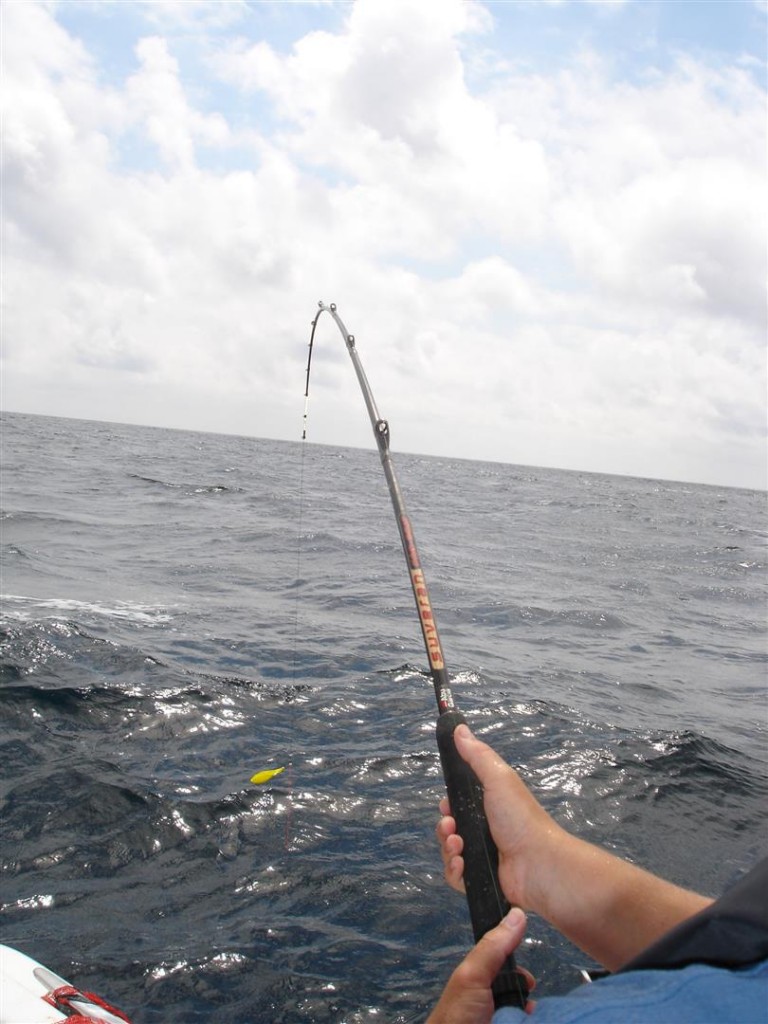
At this stage I like to strike the fish as soon as I can. I remember years ago hear things like “wait for the first run to be over before striking” I firmly believe that this is a recipe for deep-hooked fish and therefore it is better to hit them hard and hit them early. As soon as you strike and the shark takes its first run you have two things to do. First – make sure that your drag is good and tight. Second – Flick off your ratchet! It is lovely to hear the scream of a ratchet as a shark takes but I think it looks amateurish to have a ratchet screaming as you reel in!
I say to have your ratchet good and tight for good reason – you must make the shark work very hard for line. If you do not the fight will be longer for both fish and angler. Pump and wind the fish back to the boat only pausing during the runs. it is important not to give the fish any quarter during the fight. it is especially important to not leave slack line during the pump and grind. this would be even more important if you are using de barbed hooks.
A blue shark will run a number of times before becoming tired and hanging at the side of the boat. Even that first time at the boat will usually see another short run. Blues are notorious for rolling in the trace. This is why we use a long trace. Once we have the fish at the side of the boat we need to decide if we are going to bring the fish onto the boat or not. Nowadays it would be suggested to only bring the fish onboard if absolutely necessary. A picture at the side of the boat might suffice. If you are taking the fish into the boat remember smaller sharks make for better pictures. One angler will struggle to hold a large shark and a large shark will tend to “bend” when held. Specimen sharks are 1.8 metres to fork of tail. A shark of that size is over 100lbs and will be a handful. If you have space you can always lie the shark on the deck, have the angler hold the shark tail over the shoulder. Take your picture from inside the cuddy. Make sure you give your shark a clean before taking the picture.
A blue shark fight is a decent fight. It is important that you fight the fish and get it to the boat as quickly as possible. With a decent 12-20lb rod you are striking a decent balance between getting a decent fight and also being fair to the fish. Using a lighter rods is all very fine if you catch a 40lb shark but if you catch a big bruiser you run the risk of hurting the fish. Blues can and will throw up their stomach, stomach eversion it’s called. I was told that this is a protection mechanism that sharks have to protect themselves. Apparently they can swallow the stomach again without many ill effects. Whether they can or not, I’m not too sure but it is a terrible sight to behold. The only times I have seen this happen to a shark is either seriously gut hooked or a fish that has been played too long. Light gear is unable to bully a big shark enough. I have found that by holding the sharks pectoral fins and gently putting the stomach back into the shark’s mouth a few gentle shakes of the fish will see the stomach slip back into the sharks gullet. It is probably more important to fight the fish hard with your drag set tight. This is the best way to avoid eversion.
Whatever way you approach it, getting a shark into the boat is not an easy task. A tailer can help. The more anglers the better to help with the lift but you must be careful of inexperienced anglers who may have not lifted before. It tends not to be a pretty operation for either shark or anglers. The object of the exercise is to get the fish “processed” as fast as possible, measured, photo and released as soon and as gently as possible. Sharks are hardy creatures but it is important to be fair too.
Unhooking a shark can be a difficult job. I like de-barbed hooks and a t-bar because of the ease of unhooking. It can be easier to unhook at the side of the boat rather than struggling on deck. If you must use a pliers make sure it is a long-nosed pliers that keeps your hands away from the business end of the shark.
Taking that picture
A tidy shark of forty to fifty pounds takes a great picture on a small boat. Bigger sharks are more difficult to picture because the fish are long and tend to flop if held up. As I said earlier, think about lying the fish on deck with the tail draped over the angler’s shoulder.
One thing to remember about sharks is that they tend to get dirty as they move about on deck. Make sure that you take the time of give the fish a rinse before taking that picture. Shark skin responds well to a “fill in flash” which can give a lovely sheen to the fish.
Take lots of pictures. Review them on your camera before releasing the fish.
What are the common problems that can scupper a shark fishing trip?
Gear letting you down – Make sure that your rod eyes are in good condition. Make sure your reels are capable. Check out your braid. Make sure you snap swivel is new. Make sure your traces are well constructed.
Rubby Dubby – Make sure you have enough ruby dubby to cover your planned session. Have a plan B should you not catch enough mackerel for bait and dubby. Buying a frozen block of chum is a great option.
Watch the bag! Many a shark has stolen a rubby dubby bag off the side of the boat!
Weather – Shark fishing in flat clam conditions can be difficult. You may depend on the tide to make you drift. A good brisk drift is a good thing! If the conditions are too calm you are better off not bothering or consider driving for a while at tick over – create your own drift.
Landing and handling fish – Make sure you have a plan for how you are going to get the fish safely into the boat. Make sure you keep your wits about you when the shark is aboard. Make sure you have decent tools for unhooking: long nosed pliers, wire cutter pliers, T-bar etc. When you handle the trace when a shark is at the side of the boat make sure the angler keeps the rod tip high. A tangle at this stage with a shark that runs again is a disaster!
Don’t forget the balloons!
See Blue Bible Part 3





